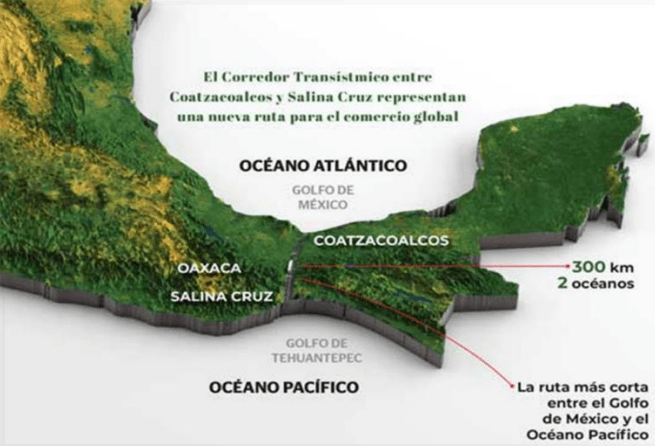CFE’s projected investments for the Isthmus of Tehuantepec for the period from 2019 to 2033 total 1,618 million pesos.
The CFE, a company owned by the State of Mexico that produces and markets electricity, as a member of the Institutional Technical Committee formed together with other federal agencies, participated in the consultation process for the Tehuantepec Isthmus Development Program.
The CFE is in charge of 120 requests related mainly to improving the quality of service and the construction of electrical infrastructure.
At the same time, also linked to the Interoceanic Train, the National Institute of Indigenous Peoples (INPI) formalized with EPS CFE Distribución a collaboration agreement since June 2019, for the construction of expansion and repowering works in electrification in municipalities, communities, indigenous and Afro-Mexican localities, in the states of Veracruz and Oaxaca, with an investment of 84.2 million pesos.
In particular, derived from the estimates of the electricity market, the CFE identified the need to build electricity infrastructure works in the Coatzacoalcos and Tehuantepec Zones in the years from 2019 to 2033, with an estimated investment amount of 1,618 million pesos.
Isthmus of Tehuantepec
The Isthmus of Tehuantepec is the narrowest portion of Mexico and North America in general, and separates the Pacific Ocean from the waters of the Gulf of Mexico and the Atlantic Ocean.
According to a Commerce Department report, Spanish efforts to turn it into an inter-oceanic trade route date back to the early 19th century, and a rail line crossing the Isthmus operated profitably between 1907 and the opening of the Panama Canal in 1914.
The government of President Andrés Manuel López Obrador intends to make the trans-isthmus route competitive with the Canal, thus boosting regional economic growth in the states of Oaxaca and Veracruz.
Logistics
The Transisthmian project will create a modernized and upgraded Interoceanic Multimodal Corridor that will provide an alternative to the Canal for northbound and Post-Panamax shipping.
As part of this project, the Mexican Government intends to modernize the Isthmus of Tehuantepec railroad; expand cargo handling and storage capacity at the ports of Coatzacoalcos, Veracruz, and Salina Cruz, Oaxaca; widen the transisthmian highway from two to four lanes; upgrade the Minatitlán and Ixtepec airports; establish a fiber optic telecommunications and cellular/data connectivity connection; and build a gas pipeline for commercial and private use.
Along the route between the two oceans, 10 development poles will be created to attract private sector investment. As part of this program, the 76 Oaxacan and Veracruz municipalities involved will reduce value-added tax (VAT) and income tax rates, in addition to offering oil at reduced prices.
![]()

